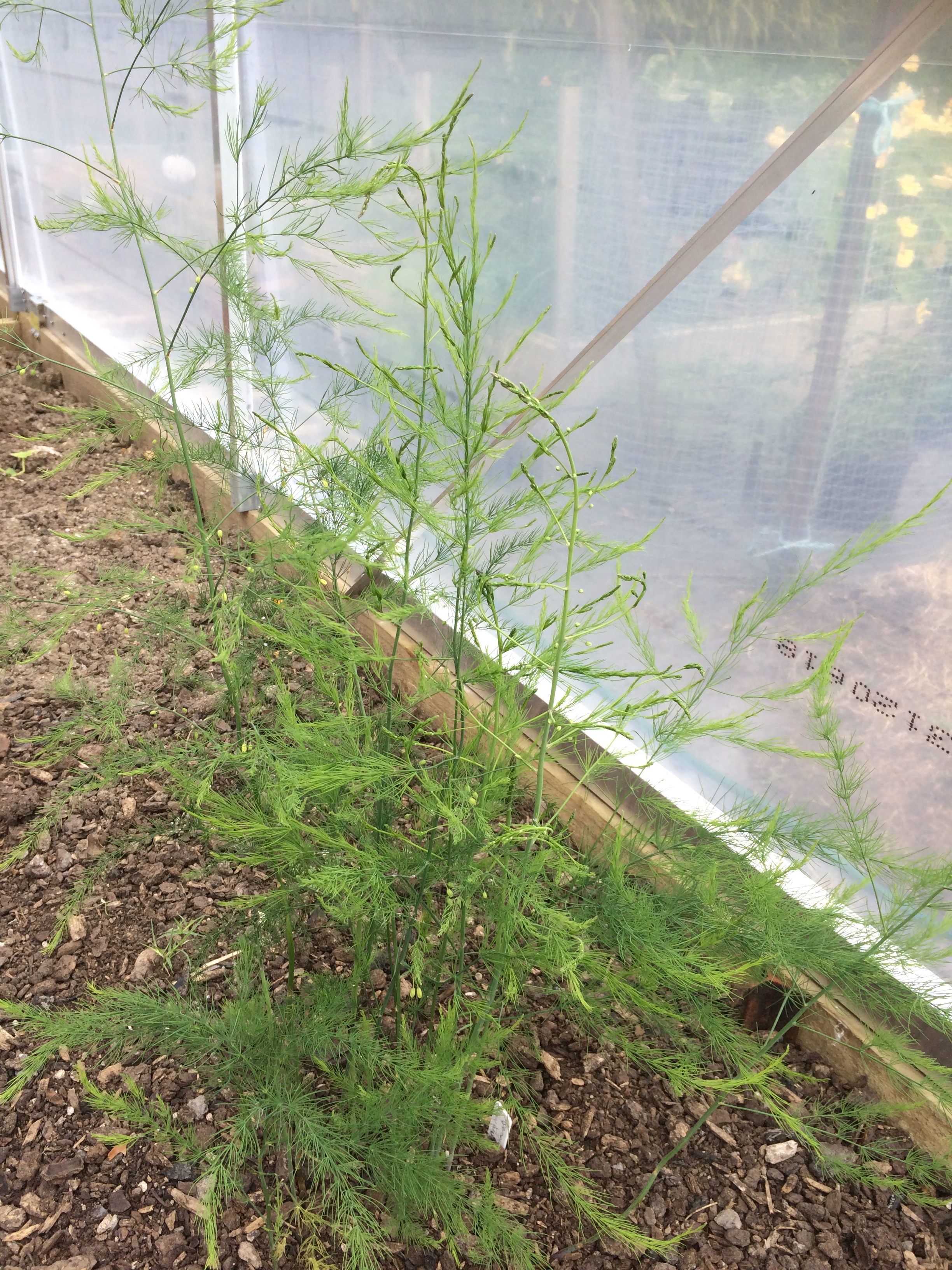Physical characteristics
An upright,
Flowers and foliage
Attractive herbaceous perennial growing to around 2m tall, with airy feathery
Preferred site
Good drainage,
Preparation for planting
Healthy soil is essential for producing vitamin and mineral-rich vegetables. The use of ample organic material is fundamental to the success of most vegetable gardens, especially those newly created on sandy or clay soils.
Organic material provides food for
A
When soil preparation is complete the vegetable garden should be weed-free and of a stable, aerated nature.
Asparagus is a perennial plant and can live for up to twenty years; it benefits from good soil preparation before planting. Removal of all weeds is essential, as this will be extremely difficult once the crop has been planted. Asparagus can be planted as young
Crowns should be planted in April in a trench 30 - 45cm wide and 35cm deep, with well-rotted organic matter placed in the bottom 15cm of the trench. Some excavated soil should be used to make a 10 cm high ridge along the bottom of the trench and crowns should be placed at 35-45 cm intervals along the trench with the roots spread out as evenly as possible around the centre of the crown. Crowns should then be cove
Tall above-ground stems can be supported to prevent them rocking in the wind and damaging the crowns.
Control weeds by mulching with organic materials, such as straw stable manure or untreated sawdust. Alternatively, using a Dutch or push hoe will discourage weeds from establishing. Careful plant spacing will also help to suppress weeds. The growing season for many spring and summer vegetables can be extended by planting in a glasshouse or under a cloche.
Maintenance tips
Asparagus
Good drainage, sun and plenty of mulch are requi
Generally, vegetables can be divided into three groups for crop rotation:
1. Root/leaf crops such as carrots, potatoes, radishes, parsnips, beetroot, yams, silverbeet, spinach and lettuce.
2. Vine crops/brassicas including tomatoes, cucumbers, melons, pumpkins, cabbages, cauliflowers and kale.
3. Legumes/alliums including garlic, onions, peas, beans and shallots.
Proper crop rotation will ensure that at any one time one of these three varieties monopolises an area of ground. Root crops such as potatoes can break and loosen the deep soil while legumes will add nitrogen from the air to the soil. Different
Prune
Pests and diseases
It is important to consider that most of the
Companion
Location at Auckland Botanic Gardens
Edible Garden
Interesting facts and tips
Garden asparagus is a widely grown seasonal vegetable that has been cultivated for thousands of years. It is now an economically important crop. This and a few other species of the genus are still harvested from the wild in parts of the Mediterranean. It is depicted on Egyptian tombs dating from the 4th century BC and evidence suggests it was cultivated in ancient Rome.




.jpg?width=1200&height=1200&v=1d4024dceb89e50)

.jpg?width=1200&height=1200&v=1d5569224d63650)
 .jpg?width=1200&height=1200&v=1d4024df6ce2770)
.jpg?width=1200&height=1200&v=1d55676a892f2b0)
 .jpg?width=1200&height=1200&v=1d4024e3b65f7f0)